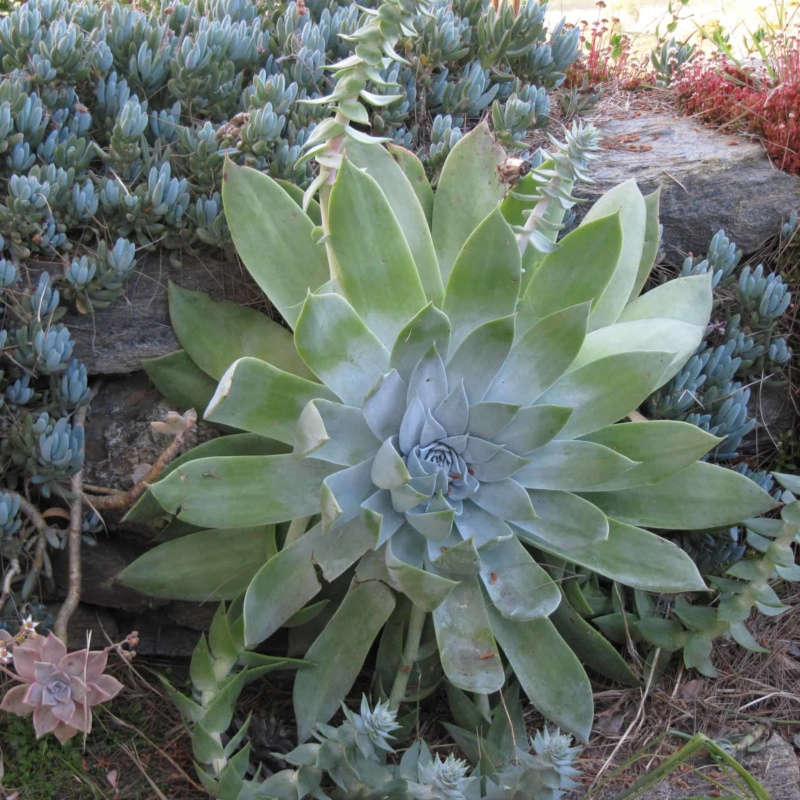

Dudleya succulents native to warm western North American climates (from Oregon to the southern tip of the Baja peninsula) are evergreen perennials that can be used in the garden as ground covers (if you choose a branching species) or as specimen plants (non-branching types will have dramatic rosette shapes.
In a warm climate, succulent Dudleya can be either a useful ground cover (if you plant one of its branching, spreading species) or a dramatic specimen plant with pointed leaves forming a tight rosette.
Beware: Dudleyas will wither in dry summer months, but that is no reason to water them. In fact, it’s best to leave these evergreen perennials succulents alone. Allow them to recover naturally (and rather theatrically) in winter when rainfall occurs spontaneously. Because of their seasonal proclivities and dormancy, interplant Dudleyas with companions that will perform during their low periods.
With blue, gray, or green foliage (and a chalky wax on their epidermis to protect the plants from sun damage), Dudleya is an attractive choice either in a garden bed or a container garden. In a container, plant it in sandy or gravelly soil (a cactus mix is best) and choose other low-water companions.